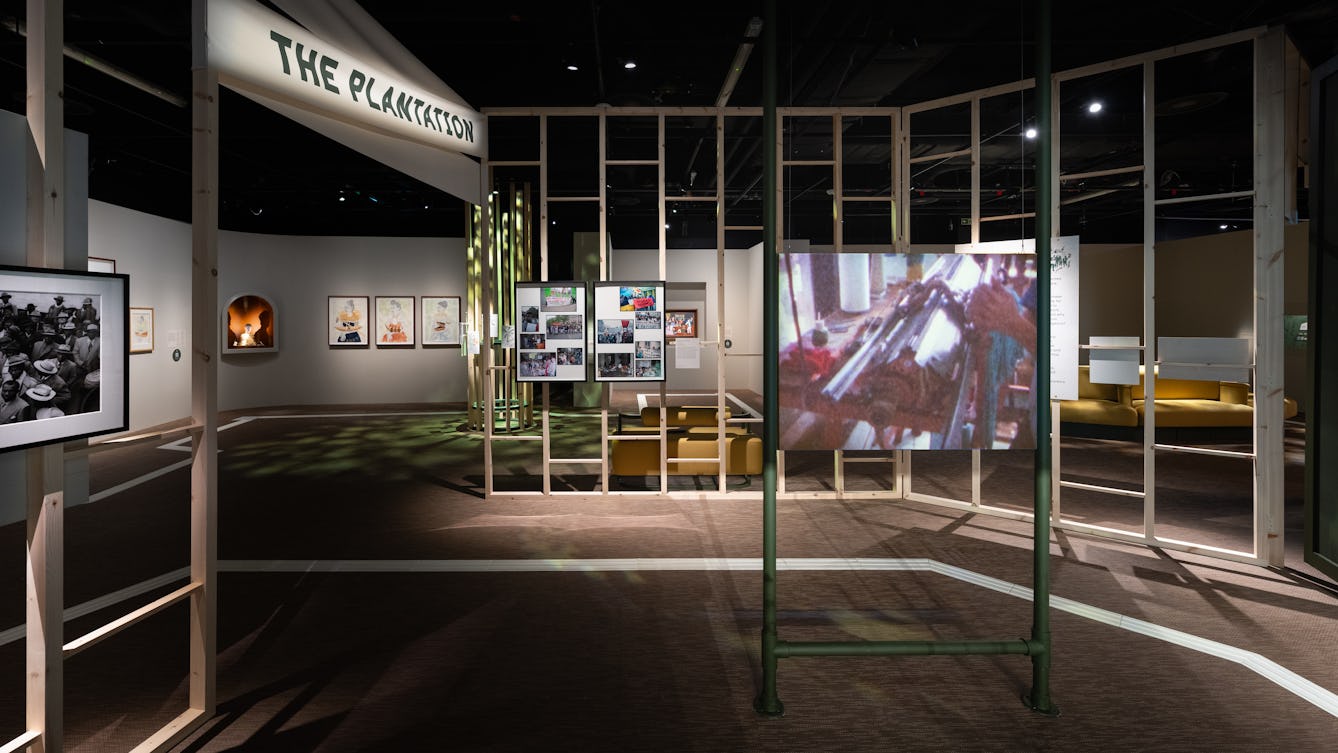Hello, my name is Cindy Sissokho. I am the curator of the ‘Hard Graft’ exhibition.
In front of you as you enter the exhibition, is a silent film projected onto a screen about 75 cm high by 1 metre wide. The film shows different hands at work – hands sewing, ironing, cutting thread, sorting flowers. The rhythmic repetition of the workers’ practised gestures is both graceful and machine-like.
The film, ‘Gestures of Labour’, was produced by artist Adelita Husni-Bey in the kampungs of Jakarta, Indonesia. Kampungs are neighbourhoods where lower-income migrants live and work, often within the same spaces. The intimacy of these workspaces is emphasised by the grainy texture and low contrast of the Super 8 film, which has been transferred to video.
The film is made up of a series of short clips. In one clip:
A dark brown hand slides an iron over a short-sleeved white cardigan.
Slide - glide - slide - glide
Smoothing out the creases…
The other fingers pinning the fabric down
Dodging
then patting-down, pressing-down, caressing-down.
In another clip, a person is preparing flowers, delicately stripping stray yellow petals from long green stalks, then stacking them neatly on the floor; the flowers were used in a funeral ceremony and are now being recycled for sale in a market. An ingenious way to create work and value from discarded materials.
In a third clip, a person sits on a tiled floor, crossed legs stretched out in front. Using scissors, they snip threads from a brown woven garment, flicking the offcuts to the floor with deft fingers.
I chose this film as the starting point of the ‘Hard Graft’ exhibition because it brings together many of the ideas threaded throughout the show.
Hard Graft explores the impact of work on health, considering links between underrepresented work, the people who do it, and where it takes place. The exhibition asks: What work do we value, and why? What traces does it leave on the body, and how does work reinforce inequality and dispossession?
Hard Graft draws connections between historical and contemporary accounts of marginalised forms of labour. This labour is often essential for society to function, but remains unpaid or low paid, and unacknowledged. The people who do this work are often exposed to unhealthy and unsafe working conditions.
Each section of the exhibition explores a space of work that is unconventional, starting with the plantation, then the street, and finally the home.
- ‘The Plantation’ highlights the exploitative conditions of work within the plantation economy, and traces its legacy in society today, from agricultural work to prison labour.
- ‘The Street’ focuses on city streets as a workplace that can be precarious and unsafe. Workers such as sex workers and sanitation workers are exposed to environmental risks from city developments, infectious diseases and heavy surveillance from the police.
- ‘The Home’ is the last section of the exhibition. Despite being an intimate space, it is also a workplace that can hide multiple forms of exploitative and unrecognised work.
Work remains the most common reason for migration and is closely tied to questions of citizenship, and rights such as healthcare and housing. Workers have often taken these concerns into their own hands to create lasting histories of resistance through collective actions, or spiritual and medicinal healing, for example.
This exhibition includes a broad range of materials, including historical documents and books, photographs, paintings, video projections and installations. Some of these involve out-loud sound, flashing lights and vibration.
Many of the historical documents and artworks are particularly sensitive to light damage. To help preserve them, the light levels are lower in some areas of the exhibition. You may need to allow a moment for your eyes to adjust as you move into and through the gallery space.
The exhibition includes references to enslavement, abuse and suicide. It also features material related to sex work.
There are seats available throughout the exhibition. If you need any further assistance, please speak to a member of staff.
This is the end of Stop 2.
